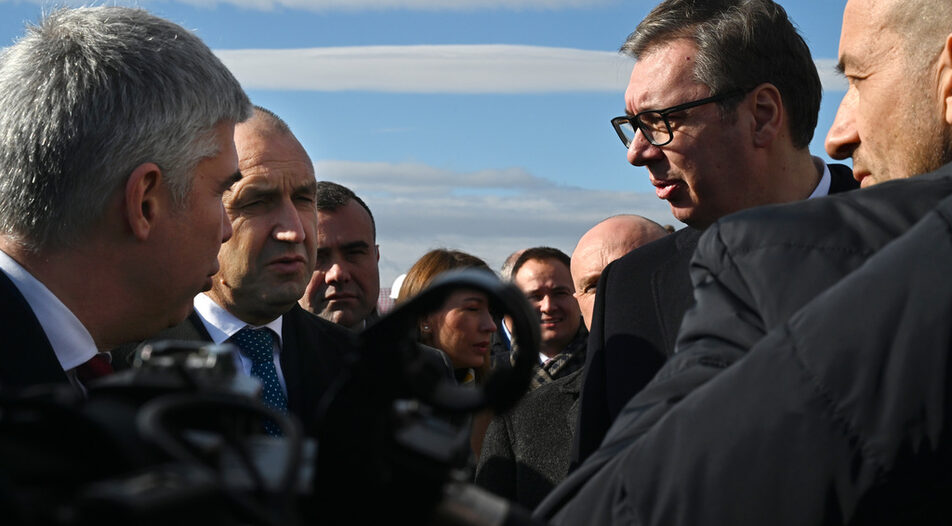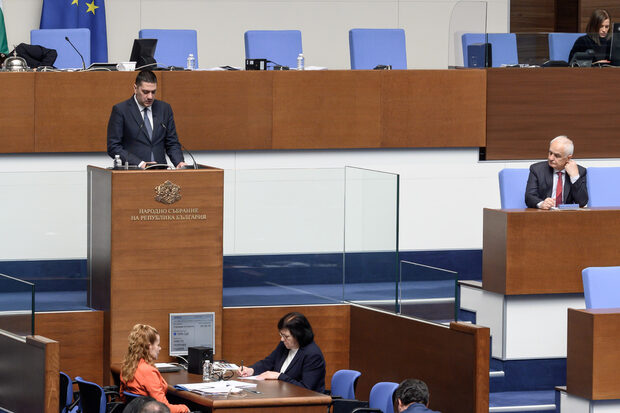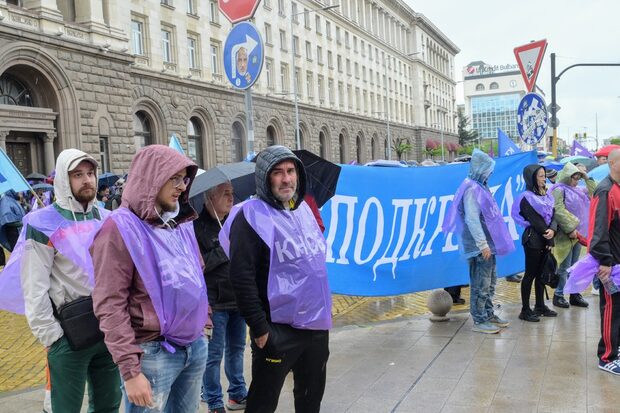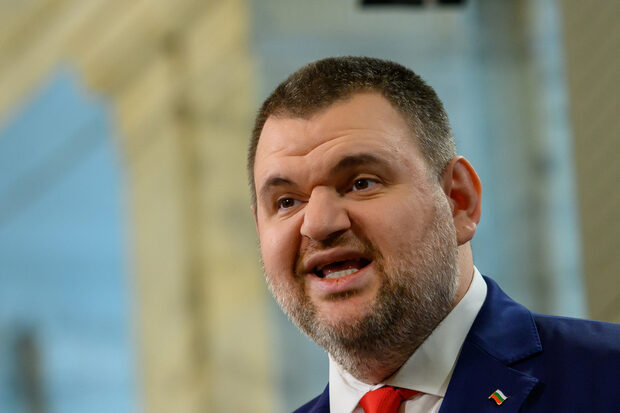After years of being transit points for Russian gas routes, Bulgaria and Serbia will finally be able to import and export natural gas back and forth. The achievement was a long time coming when you consider that the gas interconnector between Sofia and Nis was announced back in 2012, but was neglected for a whole decade by the governments of Boyko Borissov at the expense of other projects such as TurkStream.
In the past week, however, two separate ceremonies - one in Bulgaria and one in Nis, signaled the start of operations of the gas pipeline. The pipe, which took 10 months to build, will effectively start carrying gas in early 2024.
Bulgarian President Rumen Radev was present at the event in Serbia, where he stated that the gas interconnection is much more than an infrastructure project -"it is a symbol of successful cooperation between Serbia, Bulgaria and Azerbaijan".
And while the importance of the interconnector for Bulgaria's gas transmission network is rather debatable, for Serbia and the Western Balkans the pipe means a lot - due to the possibility of importing non-Russian gas. In this sense, the project has a serious geopolitical element, which is also reinforced by the visit of Azeri President Ilham Aliyev to Serbia. The pipeline will allow Belgrade to receive Azeri gas through Bulgaria, something Bulgaria already does through the interconnector with Greece - which was also delayed by nearly a decade.
For Bulgaria, perhaps the most important part of the launch, apart from the possibility of importing natural gas from the west, is the opening of the new LNG terminal in Alexandroupolis, in which the country is a 20% shareholder, which can be used to sell gas to the Western Balkans and Central Europe. According to Capital, the long-awaited second terminal in Greece will start operating in March.
There is also another market angle of the pipe launch. The controversial contract signed by Rumen Radev's office with the Turkish national company BOTAS can also play a role in the delivery of quantities to Serbia coming from the Turkish network. It is very likely that these contain quantities of Russian gas or a mix that is difficult to trace.
What does Sofia gain?
The daily capacity of the gas pipe slightly exceeds 4.5 million cubic meters (about 1.8 billion cubic meters per year), of which about 40% has already been reserved by Serbia under their supply contract with Azerbaijan. Currently, the reserved capacity only applies to this winter, as evidenced by data from the Entso-G platform, with only 3% of the pipe's capacity in the direction of Serbia being reserved after April. If Belgrade does not find other suppliers, in reality the pipe will be almost empty.
According to the platform, the capacity in the Bulgarian direction is about 7 times smaller - the technical capacity of the reversal flow is 0.74 million cubic meters per day. This raises doubts as to whether, in the event of Bulgaria needing to import quantities from the pipe, it will have sufficient technical capacity. Smaller consumers (such as industry) will still be able to use the pipeline if they find sources in Croatia, Slovenia or Austria.
The total amount that Bulgaria will receive as transit fees from the gas connection is 3.3 million levs for the first three-month period in which Serbia will use it effectively. If the entire capacity is preserved and there are constant flows along the pipe, state gas operator Bulgartransgaz will be able to generate about 32 million levs per year at current transmission tariffs. For the project to pay off the investment, it will take 6-7 years, but if we consider only the quantities for Serbia at the moment, it could take up to 60 years.
Energy Minister Rumen Radev did not indicate during the opening of the pipe from the Bulgarian side last week whether it was working on its own gas transmission deals, only mentioning the interest from Kosovo, Serbia and Montenegro.
Why the connection is important
The gas pipeline starts from the gas distribution station near Novi Iskar, then passes through Kostinbrod and Dragoman - a total of 62 km. At Dimitrovgrad in Serbia, it continues to the network of our western neighbor to Nis - another 88 km.
The gas connection also facilitates the construction of diversions for gas supply to Slivnitsa and Dragoman - something that was missing as a project possibility with Turk Stream in Northwestern Bulgaria.
A great benefit of the new network is that it could provide a route for supplying Bulgaria with natural gas from the Kirk liquefied gas terminal in Croatia and thus, in case of force majeure, and not only, the country could count on additional buying options. There is also the possibility of importing from Slovenia and Austria, which count among the largest hubs in Central Europe.
The price
After significant indexation of the contract, the project increased significantly in price during construction - from 139.8 million levs without VAT, the value increased by 32.6% to 183.4 million levs. A loophole remains stipulating that the contract amount can be increased by up to 50%. Roughly, this means that the costs of the Serbian gas connection may swell to about 200 million levs.
The main reason for the delay in the project was related to the builder. Initially, the contracting authority Bulgartransgaz chose the Kenpipe consortium as the winner. The company was relatively unknown and had little experience in the sector but there was evidence of connections to businessman Alexander Staliyski who was allegedly close to Boyko Borissov and Delyan Peevski. After complaints to the Commission for the Protection of Competition, Kenpipe was removed, and the consortium of Glavbolgarstroy - International Gas, which is also the builder of the gas pipeline, emerged in first place.
The European Commission financially supports the project through the Connecting Europe instrument, which works for the connectivity of energy systems in the EU. The allocated amount is 27 million euros, or about 25% of the total value of the project.
After years of being transit points for Russian gas routes, Bulgaria and Serbia will finally be able to import and export natural gas back and forth. The achievement was a long time coming when you consider that the gas interconnector between Sofia and Nis was announced back in 2012, but was neglected for a whole decade by the governments of Boyko Borissov at the expense of other projects such as TurkStream.
In the past week, however, two separate ceremonies - one in Bulgaria and one in Nis, signaled the start of operations of the gas pipeline. The pipe, which took 10 months to build, will effectively start carrying gas in early 2024.












